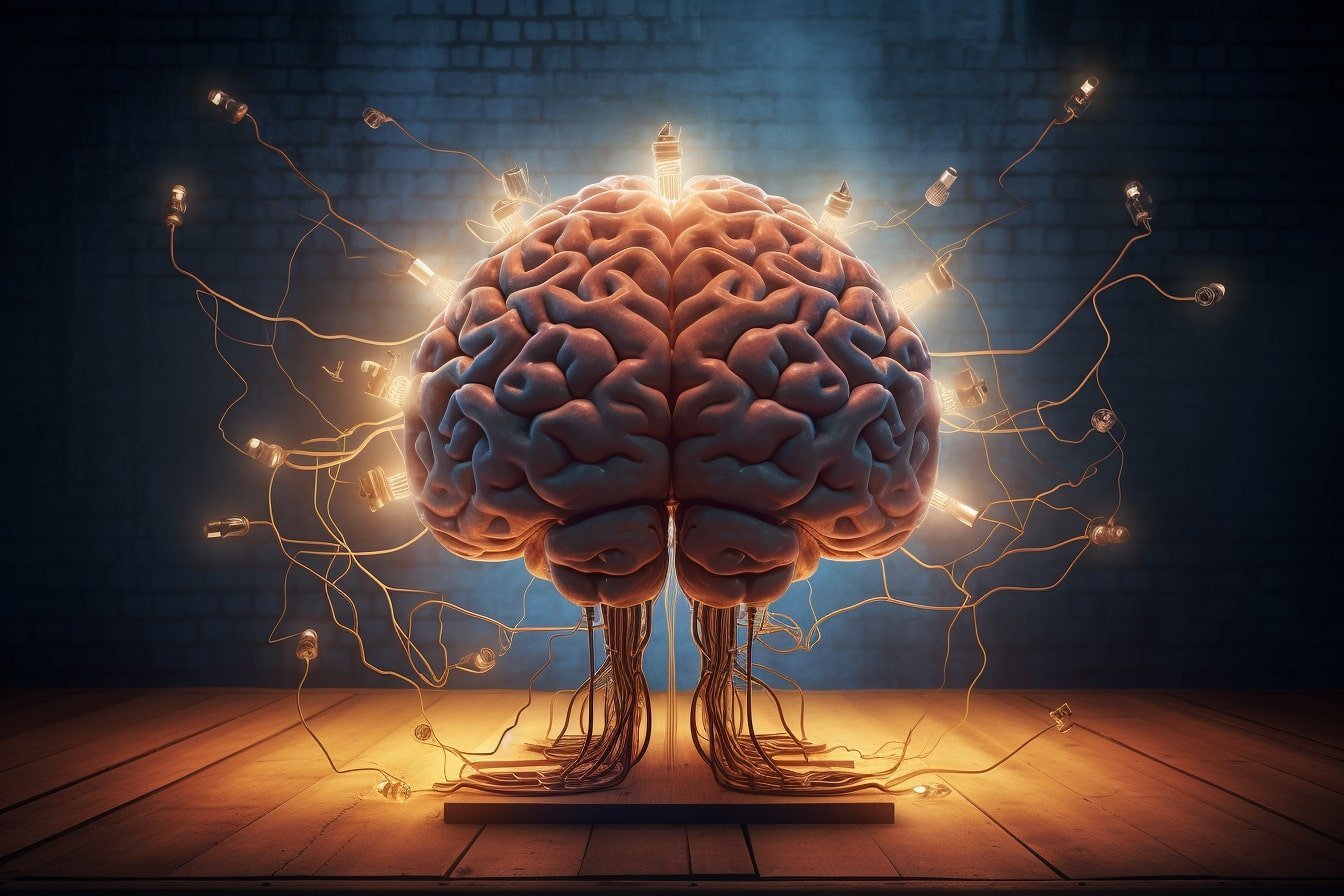Summary: Electric fields, generated by neural activity, play a crucial role in coordinating brain functions, akin to a conductor leading an orchestra.
As animals engaged in working memory games, the researchers observed that information across two vital brain regions was coordinated by the emerging electric field. This field was seen to direct neural activity, influencing voltage fluctuations across the neurons’ membranes.
The findings illuminate a crucial understanding of the brain’s workings, potentially improving the design of brain-controlled prosthetics.
Key Facts:
- The research demonstrates that electric fields emerging from neurons’ electrical activity coordinate information across different brain regions during cognitive tasks.
- The researchers used advanced mathematical models to demonstrate that electric fields have a strong causal influence over neural activity.
- These findings could significantly advance the design of brain-computer interface (BCI) devices and improve understanding of brain’s workings.
Source: MIT
The “circuit” metaphor of the brain is as indisputable as it is familiar: Neurons forge direct physical connections to create functional networks, for instance to store memories or produce thoughts. But the metaphor is also incomplete.
What drives these circuits and networks to come together? New evidence suggests that at least some of this coordination comes from electric fields.

A new open-access study in Cerebral Cortex shows that as animals played working memory games, the information about what they were remembering was coordinated across two key brain regions by the electric field that emerged from the underlying electrical activity of all participating neurons.
The field, in turn, appeared to drive the neural activity, or the fluctuations of voltage apparent across the cells’ membranes.
If the neurons are musicians in an orchestra, the brain regions are their sections, and the memory is the music they produce, the study’s authors say, then the electric field is the conductor.
The physical mechanism by which this prevailing electric field influences the membrane voltage of constituent neurons is called “ephaptic coupling.”
Those membrane voltages are fundamental to brain activity. When they cross a threshold, neurons “spike,” sending an electrical transmission that signals other neurons across connections called synapses.
But any amount of electrical activity could contribute to a prevailing electric field that also influences the spiking, says study senior author Earl K. Miller, Picower Professor in the Department of Brain and Cognitive Sciences at MIT.
“Many cortical neurons spend a lot of time wavering on verge of spiking” Miller says. “Changes in their surrounding electric field can push them one way or another. It’s hard to imagine evolution not exploiting that.”
In particular, the new study showed that the electric fields drove the electrical activity of networks of neurons to produce a shared representation of the information stored in working memory, says lead author Dimitris Pinotsis, associate professor at City, University of London and a research affiliate in The Picower Institute for Learning and Memory.
He noted that the findings could improve the ability of scientists and engineers to read information from the brain, which could help in the design of brain-controlled prosthetics for people with paralysis.
“Using the theory of complex systems and mathematical pen-and-paper calculations, we predicted that the brain’s electric fields guide neurons to produce memories,” Pinotsis says.
“Our experimental data and statistical analyses support this prediction. This is an example of how mathematics and physics shed light on the brain’s fields and how they can yield insights for building brain-computer interface (BCI) devices.”
Fields prevail
In a 2022 study, Miller and Pinotsis developed a biophysical model of the electric fields produced by neural electrical activity. They showed that the overall fields that emerged from groups of neurons in a brain region were more reliable and stable representations of the information animals used to play working memory games than the electrical activity of the individual neurons.
Neurons are somewhat fickle devices whose vagaries produce an information inconsistency called “representational drift.” In an opinion article earlier this year, the scientists also posited that in addition to neurons, electric fields affected the brain’s molecular infrastructure and its tuning so that the brain processes information efficiently.
In the new study, Pinotsis and Miller extended their inquiry to asking whether ephaptic coupling spreads the governing electric field across multiple brain regions to form a memory network, or “engram.”
They therefore broadened their analyses to look at two regions in the brain: The frontal eye fields (FEF) and the supplementary eye fields (SEF). These two regions, which govern voluntary movement of the eyes, were relevant to the working memory game the animals were playing because in each round the animals would see an image on a screen positioned at some angle around the center (like the numbers on a clock). After a brief delay, they had to glance in the same direction that the object had just been in.
As the animals played, the scientists recorded the local field potentials (LFPs, a measure of local electrical activity) produced by scores of neurons in each region. The scientists fed this recorded LFP data into mathematical models that predicted individual neural activity and the overall electric fields.
The models allowed Pinotsis and Miller to then calculate whether changes in the fields predicted changes in the membrane voltages, or whether changes in that activity predicted changes in the fields.
To do this analysis, they used a mathematical method called Granger causality. Unambiguously, this analysis showed that in each region, the fields had strong causal influence over the neural activity and not the other way around.
Consistent with last year’s study, the analysis also showed that measures of the strength of influence remained much steadier for the fields than for the neural activity, indicating that fields were more reliable.
The researchers then checked causality between the two brain regions and found that electric fields, but not neural activity, reliably represented the transfer of information between FEF and SEF.
More specifically, they found that the transfer typically flowed from FEF to SEF, which agrees with prior studies of how the two regions interact. FEF tends to lead the way in initiating an eye movement.
Finally, Pinotsis and Miller used another mathematical technique called representation similarity analysis to determine whether the two regions were, in fact, processing the same memory. They found that the electric fields, but not the LFPs or neural activity, represented the same information across both regions, unifying them into an engram memory network.
Further clinical implications
Considering evidence that electric fields emerge from neural electrical activity but then come to drive neural activity to represent information, Miller speculated that perhaps a function of electrical activity in individual neurons is to produce the fields that then govern them.
“It’s a two-way street,” Miller says. “The spiking and synapses are very important. That’s the foundation. But then the fields turn around and influence the spiking.”
That could have important implications for mental health treatments, he says, because whether and when neurons spike influences the strength of their connections, and thereby the function of the circuits they form, a phenomenon called synaptic plasticity.
Clinical technologies such as transcranial electrical stimulation (TES) alter brain electrical fields, Miller notes. If electrical fields not only reflect neural activity but actively shape it, then TES technologies could be used to alter circuits. Properly devised electrical field manipulations, he says, could one day help patients rewire faulty circuits.
Funding: Funding for the study came from U.K. Research and Innovation, the U.S. Office of Naval Research, The JPB Foundation, and the Picower Institute.
About this neuroscience research news
Author: David Orenstein
Source: MIT
Contact: David Orenstein – MIT
Image: The image is credited to Neuroscience News
Original Research: Open access.
“In vivo ephaptic coupling allows memory network formation” by Earl Miller et al. Cerebral Cortex
Abstract
In vivo ephaptic coupling allows memory network formation
It is increasingly clear that memories are distributed across multiple brain areas. Such “engram complexes” are important features of memory formation and consolidation.
Here, we test the hypothesis that engram complexes are formed in part by bioelectric fields that sculpt and guide the neural activity and tie together the areas that participate in engram complexes. Like the conductor of an orchestra, the fields influence each musician or neuron and orchestrate the output, the symphony.
Our results use the theory of synergetics, machine learning, and data from a spatial delayed saccade task and provide evidence for in vivo ephaptic coupling in memory representations.







